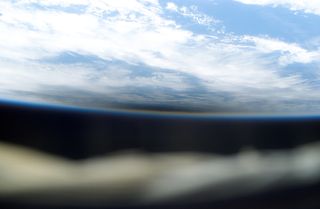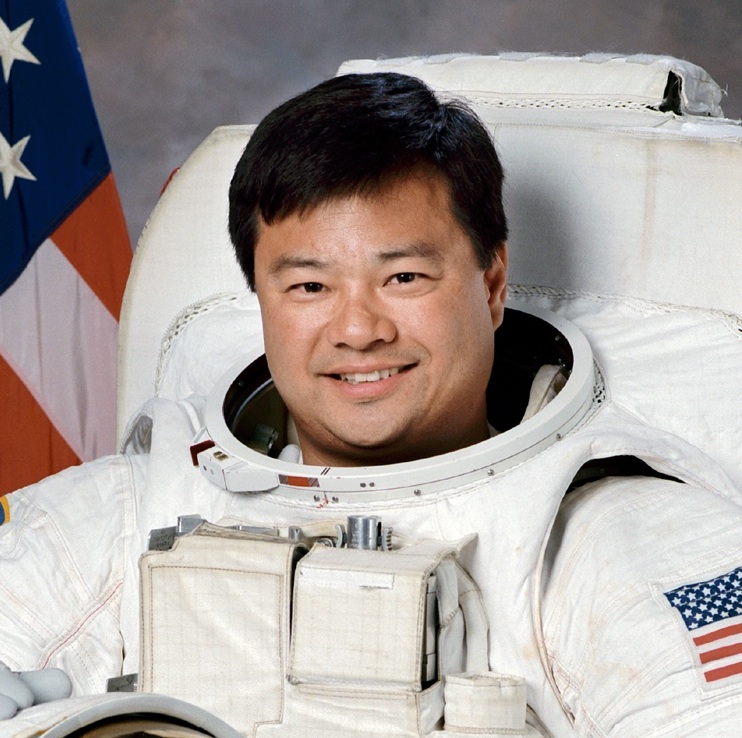
Why an Eclipse Is Better Viewed from Earth: An Astronaut's Perspective

In one day, we will be treated to a total eclipse of the sun over a large portion of the United States. This has not happened since 1979.
I remember observing part of a total eclipse when I was in grade school, back in 1970. The next day, I saw a newspaper article about a girl who became blind because she watched it for several minutes without any eye protection (when the sun was not totally obscured). Her mother came into her room and caught her, and made her stop.
Her blindness came on gradually, over the next several hours. This made quite an impression on me, and helped me to understand why the ancients came up with all kinds of superstitions and beliefs related to the phenomenon, pretty much all of them bad.
Many cultures believed that an eclipse was the sun being swallowed by a creature, in the form of a dragon, toad, bear or serpent, to name a few. They would encourage people to make noise to scare away the creature, in order to bring back the sun. There are stories of bad omens and ancient sacrifices. Imagine what it was like! Even today, some cultural superstitions and practices persist, but, thankfully, they no longer include human sacrifice.
Of course, humans have understood eclipse now for at least 500 years. But, it doesn't make the experience any less fantastic. During my mission aboard the International Space Station (ISS), I shot what I was told was the first astronaut video of a partial eclipse. It was different to observe the eclipse from above. It took the form of a large dark spot on the clouds of the Earth that grew lighter toward the edge.
I imagine what impression the upcoming total eclipse will make on the crew currently aboard ISS. You've heard about the so-called "overview effect" that some astronauts experience while observing our Earth from space. (It's real, I felt it.) The thing is, you don't have to be in space to experience this. An eclipse is one phenomenon that is actually more impressive from the ground. Even though we understand eclipse, it, like other awe-inspiring phenomena in our world and universe, should give us perspective and make us pause and think about what really is important.
Editor's note: Visit Space.com to see the total solar eclipse on Aug. 21, with a live webcast from NASA beginning at 12 p.m. EDT (1600 GMT).
Get the Space.com Newsletter
Breaking space news, the latest updates on rocket launches, skywatching events and more!
Join our Space Forums to keep talking space on the latest missions, night sky and more! And if you have a news tip, correction or comment, let us know at: community@space.com.
Leroy Chiao is a former NASA astronaut and International Space Station (ISS) commander. Chiao holds appointments at Rice University and the Baylor College of Medicine. Chiao has worked extensively in both government and commercial space programs, and has held leadership positions in commercial ventures and NASA. Chiao is a fellow of the Explorers Club, and a member of the International Academy of Astronautics and the Committee of 100. Chiao also serves in various capacities to further space education. In his 15 years with NASA, Chiao logged more than 229 days in space, more than 36 hours spent in Extra-Vehicular Activity (spacewalks). From June to September 2009, he served as a member of the White House appointed Review of U.S. Human Spaceflight Plans Committee, and currently serves on the NASA Advisory Council. Chiao studied chemical engineering at the University of California, Berkeley, earning a Bachelor of Science degree in 1983. He continued his studies at the University of California at Santa Barbara, earning his Master of Science and Doctor of Philosophy degrees in 1985 and 1987. Prior to joining NASA in 1990, he worked as a research engineer at Hexcel Corp. and then at the U.S. Department of Energy's Lawrence Livermore National Lab. Dr. Chiao left NASA in December, 2005 following a 15-year career with the agency. Chiao studied chemical engineering at the University of California, Berkeley, earning a Bachelor of Science degree in 1983. He continued his studies at the University of California at Santa Barbara, earning his Master of Science and Doctor of Philosophy degrees in 1985 and 1987. Prior to joining NASA in 1990, he worked as a research engineer at Hexcel Corp. and then at the U.S. Department of Energy's Lawrence Livermore National Lab.

